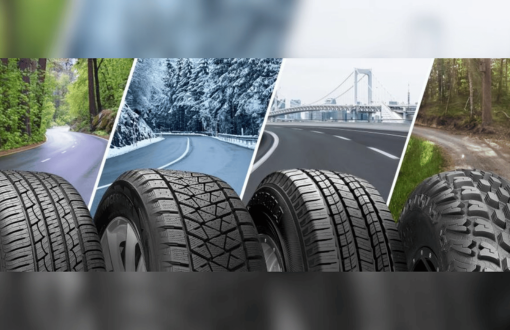No items in cart right now!
Working Hours - 8 AM To 8 PM
 March 25
March 25
Your tyres are the only point of contact between your vehicle and the road, making them a critical factor in driving safety. As seasons change, so do the road conditions, which is why seasonal tyre changes are essential. Whether it’s the icy grip needed in winter or enhanced performance in summer, the right tyres ensure safety and efficiency.
In this blog, we’ll explore the importance of seasonal tyres, their impact on performance and safety, and when to make the switch.
Seasonal tyres are designed to handle specific weather conditions effectively:
Summer Tyres: Optimized for dry and warm conditions, offering better grip and fuel efficiency.
Winter Tyres: Engineered for cold weather, these tyres improve traction on icy and snowy roads.
All-Season Tyres: A hybrid option, but not as effective as dedicated seasonal tyres.
Temperature fluctuations directly affect tyre performance:
Cold weather hardens summer tyres, reducing grip and increasing braking distance.
Hot roads soften winter tyres, causing excessive wear and poor handling.
Using the right tyres minimizes the risk of skidding and hydroplaning.
Winter tyres should be installed when temperatures drop below 7°C (45°F).
Summer tyres should be reinstalled when temperatures rise above 7°C.
Regularly check weather forecasts to determine the ideal switch time.
Enhanced Safety: Proper traction reduces accident risks.
Improved Performance: Better handling and braking efficiency.
Cost-Effective: Extends tyre lifespan by preventing unnecessary wear.
Tread Depth & Pattern: Winter tyres have deeper grooves to manage snow and ice.
Rubber Composition: Summer tyres have a harder compound, while winter tyres remain flexible in cold temperatures.
Tyre Size: Ensure compatibility with your vehicle specifications.
Professional Installation: Guarantees correct balancing and alignment.
DIY Installation: Suitable for experienced drivers with proper equipment.
Need expert advice on seasonal tyres? Contact Etarat Online for professional tyre change services today!
While all-season tyres provide convenience, they lack the specialized features of seasonal tyres, making them less effective in extreme weather.
Winter tyres improve grip not just in snow but also in cold, wet conditions, reducing the risk of skidding.
For balanced performance and safety, it’s essential to install a full set of four winter tyres.
Check for uneven wear, cracks, or bulges.
Measure tread depth to ensure compliance with safety standards.
Store off-season tyres in a cool, dry place.
Use tyre bags to prevent dust and moisture damage.
Cold weather decreases pressure, while hot weather increases it.
Regularly check and adjust to manufacturer specifications.
Get the best seasonal tyres for your vehicle. Explore our range at Etarat Online and drive with confidence!
Switch to winter tyres when temperatures drop below 7°C and back to summer tyres when it rises above 7°C.
All-season tyres work well in moderate conditions but are not as effective as dedicated seasonal tyres in extreme weather.
If you have the right tools and experience, you can. However, professional installation ensures proper balancing and alignment.
Yes, winter tyres are softer and will wear out quickly on dry, warm roads, reducing their lifespan.
Using the wrong tyres for the season increases wear, reduces safety, and affects vehicle performance.
Seasonal tyre changes are essential for maintaining optimal safety, performance, and cost-effectiveness. By understanding when and why to switch tyres, you ensure a smoother, safer driving experience.For expert guidance and top-quality seasonal tyres, trust Etarat Online—your reliable partner for tyre safety and performance!
leave a comment